Python in Precision Agriculture: Crop Monitoring
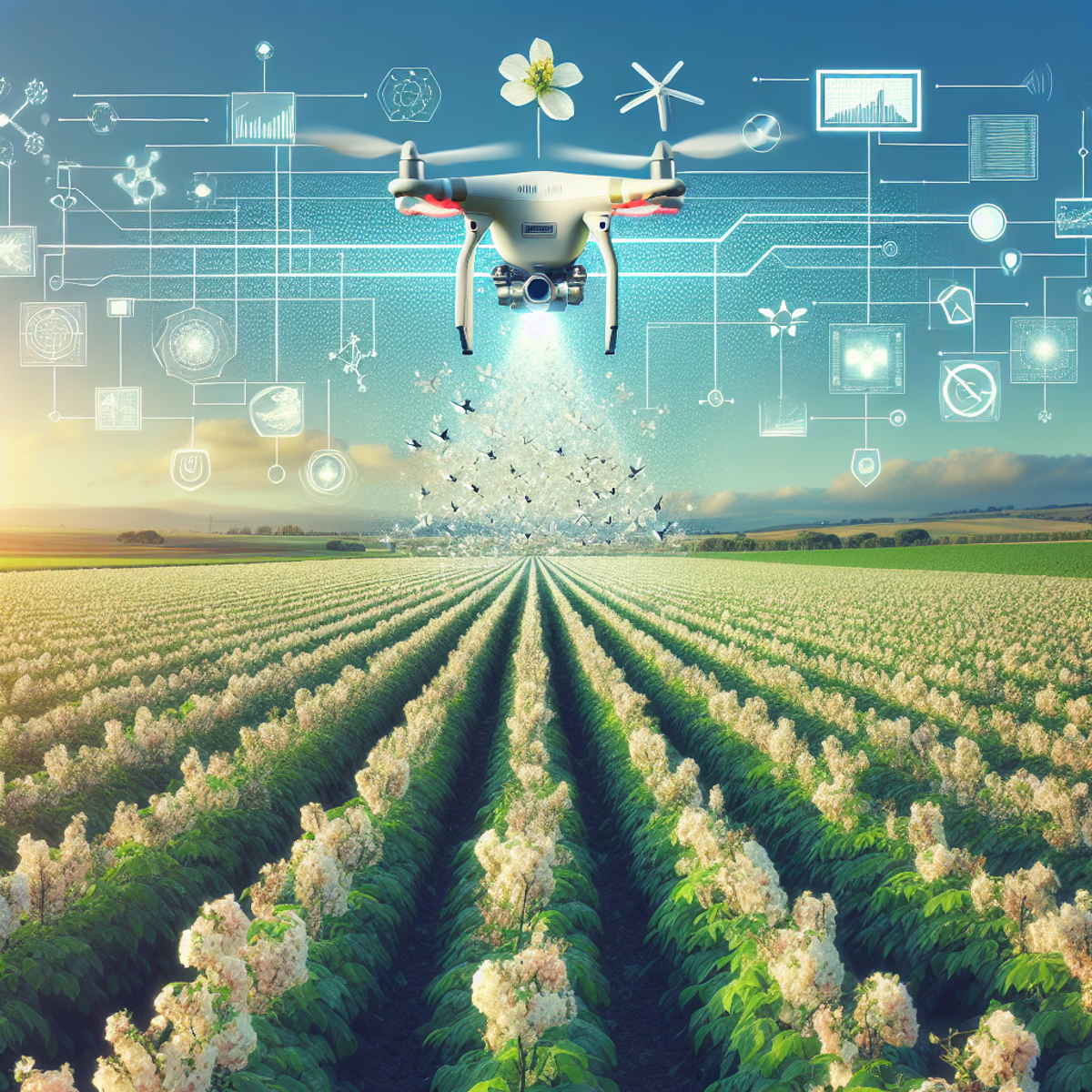
Python in Precision Agriculture: Crop Monitoring
Introduction
Precision agriculture has revolutionized the farming industry by leveraging advanced technologies and data-driven approaches to optimize crop production. At the core of this groundbreaking practice is crop monitoring, which plays a key role in ensuring the success and sustainability of precision agriculture practices. In this article, we will explore the significance of Python, a powerful programming language, in supporting data analysis, automation, and decision-making in agricultural processes.
Understanding Precision Agriculture and Its Benefits for Crop Monitoring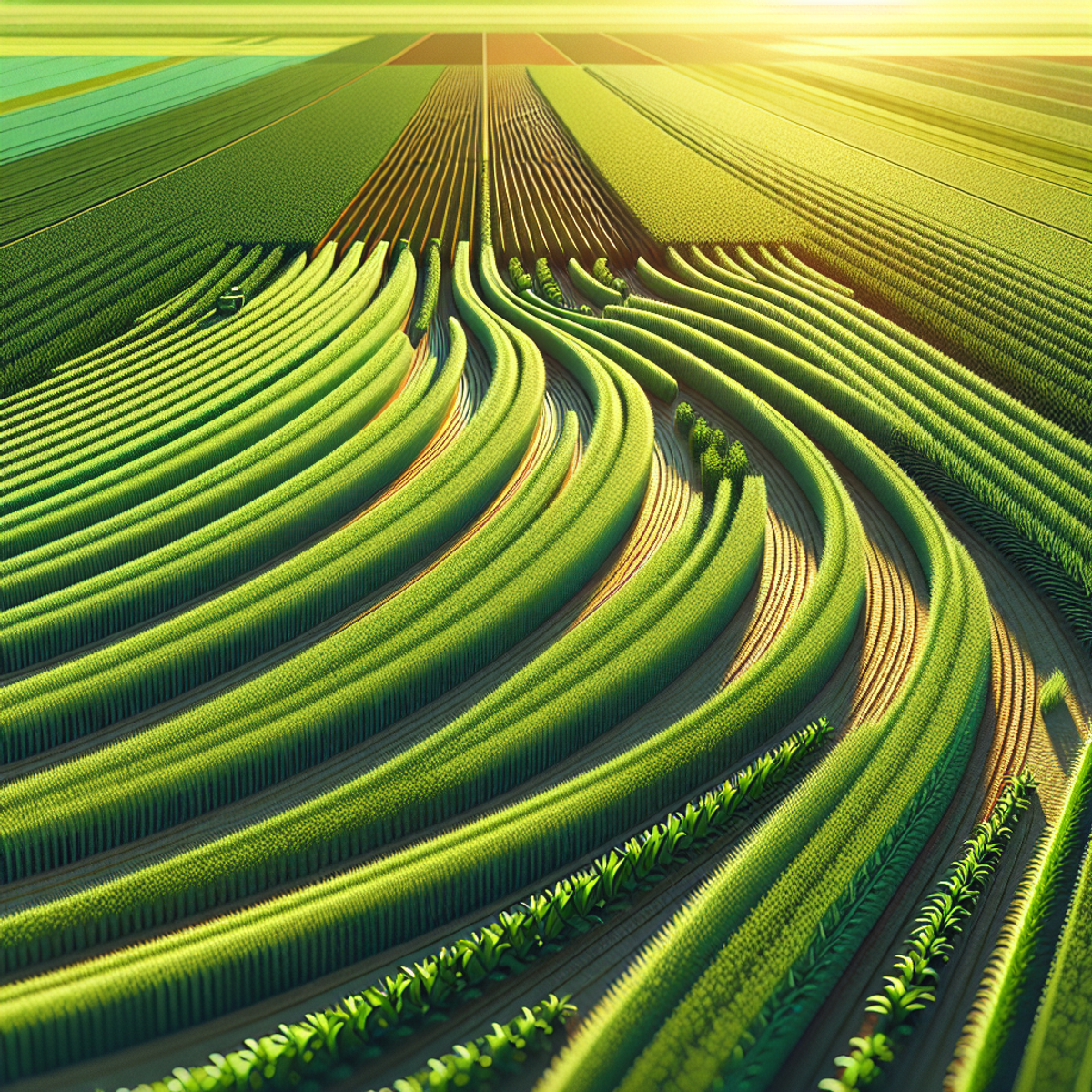
Precision agriculture is a revolutionary approach to farming that leverages advanced technologies and data-driven strategies to optimize crop production with enhanced efficiency and accuracy. It involves the integration of various tools and techniques to monitor crops continuously, ensuring their health, detecting pests or diseases, managing irrigation, and applying fertilizers precisely when needed.
Definition and Technology Integration
Precision agriculture uses technology to monitor crops in real-time, providing valuable insights into plant health, growth patterns, and environmental conditions. It harnesses the power of technology to revolutionize traditional farming practices through the following:
1. Sensors
Sensors play a crucial role in capturing data related to soil conditions, weather parameters, plant growth, and more. These sensors provide accurate measurements that enable precise decision-making in farming operations.
2. Global Positioning System (GPS) Technology
Global Positioning System (GPS) technology is essential in georeferencing data collected from different field locations. It enables spatial analysis and mapping, facilitating targeted interventions in crop monitoring activities.
3. Remote Sensing Techniques
Remote sensing techniques, such as satellite imagery or aerial drones, provide large-scale data for monitoring crop health. These technologies help identify stress patterns and delineate management zones within fields.
4. Advanced Data Analysis Tools
Advanced data analysis tools like machine learning algorithms and predictive models enable farmers to derive meaningful insights from the vast amount of information gathered through sensors and remote sensing platforms.
Importance of Continuous Crop Monitoring
Continuous crop monitoring lies at the heart of precision agriculture. By constantly assessing plant health and environmental conditions, farmers can take proactive measures to ensure optimal growth. Here's why continuous crop monitoring is crucial:
- Plant Health Assessment: Regular monitoring allows farmers to detect early signs of stress or disease in crops. By identifying issues promptly, they can take corrective measures before irreparable damage occurs.
- Pest and Disease Detection: Monitoring helps identify pest infestations and disease outbreaks, enabling farmers to take targeted action. By using precise interventions, they can minimize crop loss and reduce the need for excessive pesticide use.
- Irrigation Management: Continuous monitoring of soil moisture levels helps farmers manage irrigation efficiently. By applying water precisely when needed, they can avoid overwatering or under-watering, optimizing resource usage.
- Fertilizer Application: Monitoring allows farmers to apply fertilizers in a targeted manner based on crop needs. By avoiding unnecessary fertilizer usage, they reduce environmental pollution and save costs.
Benefits of Precision Agriculture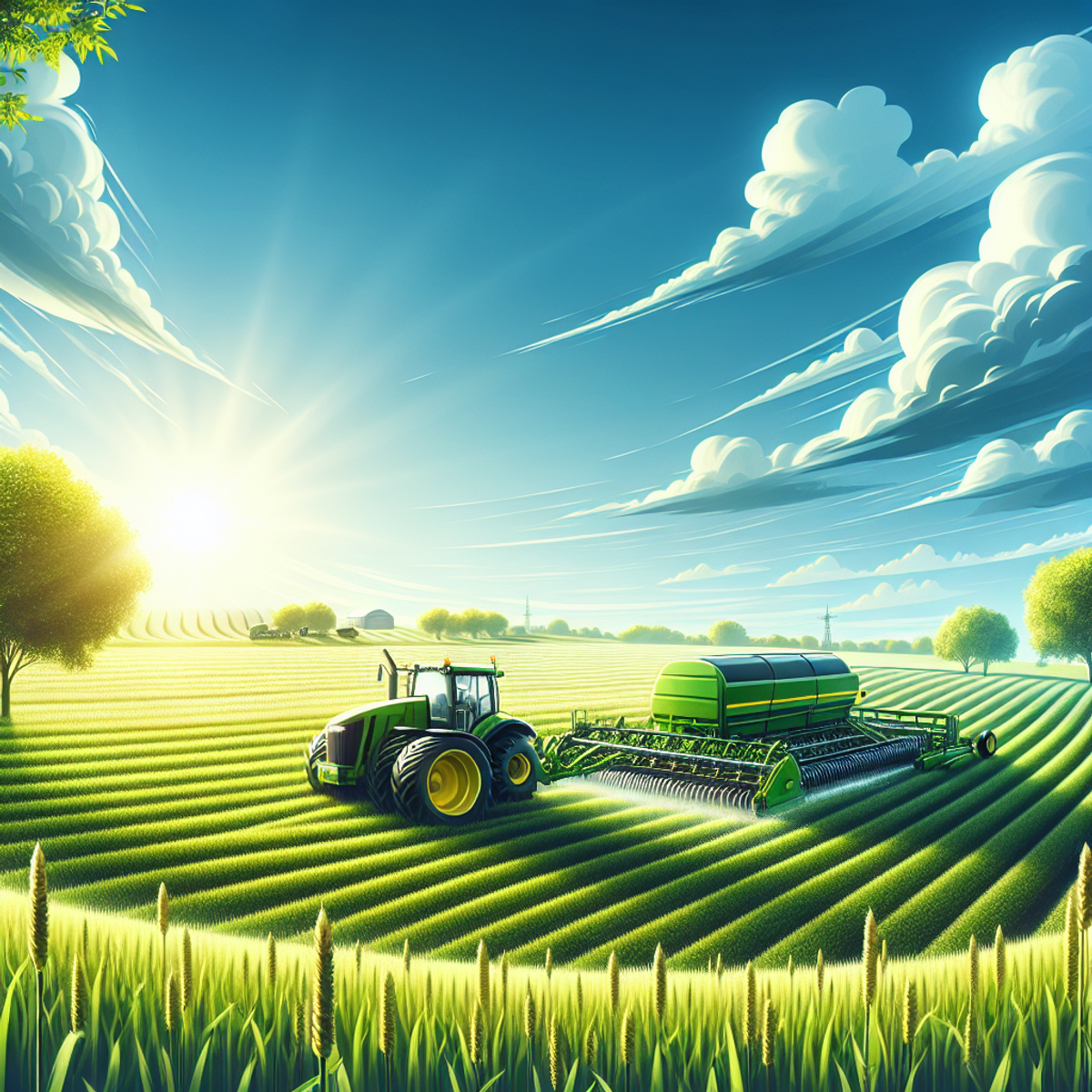
Precision agriculture offers numerous benefits that contribute to higher yields, reduced environmental impact, improved resource management, and overall economic sustainability. Here are some key advantages:
- Increased Yields: By optimizing inputs like water, fertilizers, and pesticides based on accurate data, precision agriculture helps maximize crop yields.
- Environmental Sustainability: Targeted interventions in pest control and fertilizer application reduce environmental pollution and minimize the impact on surrounding ecosystems.
- Resource Efficiency: Precision agriculture enables efficient usage of resources like water and energy by applying them precisely where needed. This reduces waste and improves overall resource management.
- Cost Reduction: By minimizing input usage and maximizing output, precision agriculture helps farmers reduce
Advanced Technologies Driving Precision Agriculture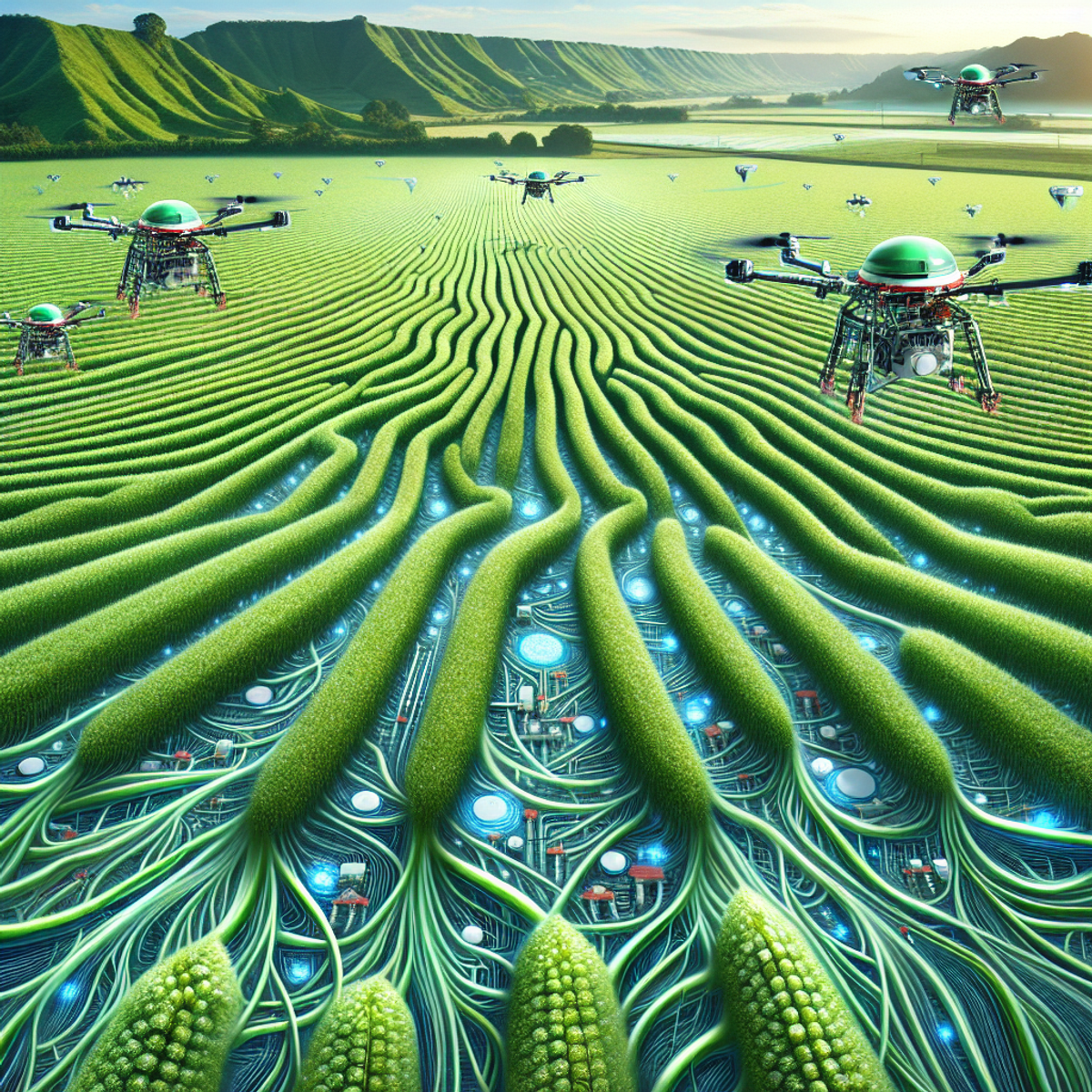
Precision agriculture relies on advanced technologies to collect and analyze data for effective crop monitoring. These technologies play a crucial role in optimizing farming operations and enabling informed decision-making. In this section, we will explore the key technologies driving precision agriculture, including sensors, GPS, remote sensing, and data analysis tools.
Sensors: Capturing Crucial Data for Decision-Making
Sensors are essential for capturing various types of data related to soil conditions, weather parameters, plant growth, and more. They provide farmers with real-time insights into their crops, allowing them to make precise decisions about irrigation, pest control, fertilization, and other critical factors affecting plant health.
- Soil moisture sensors help prevent overwatering or underwatering by measuring the water content in the soil and determining when irrigation is necessary.
- Temperature and humidity sensors enable farmers to monitor environmental conditions and make adjustments accordingly.
- Light sensors can provide information about the amount of sunlight reaching plants, helping farmers optimize their positioning or implement shading techniques as needed.
GPS: Georeferencing Data for Spatial Analysis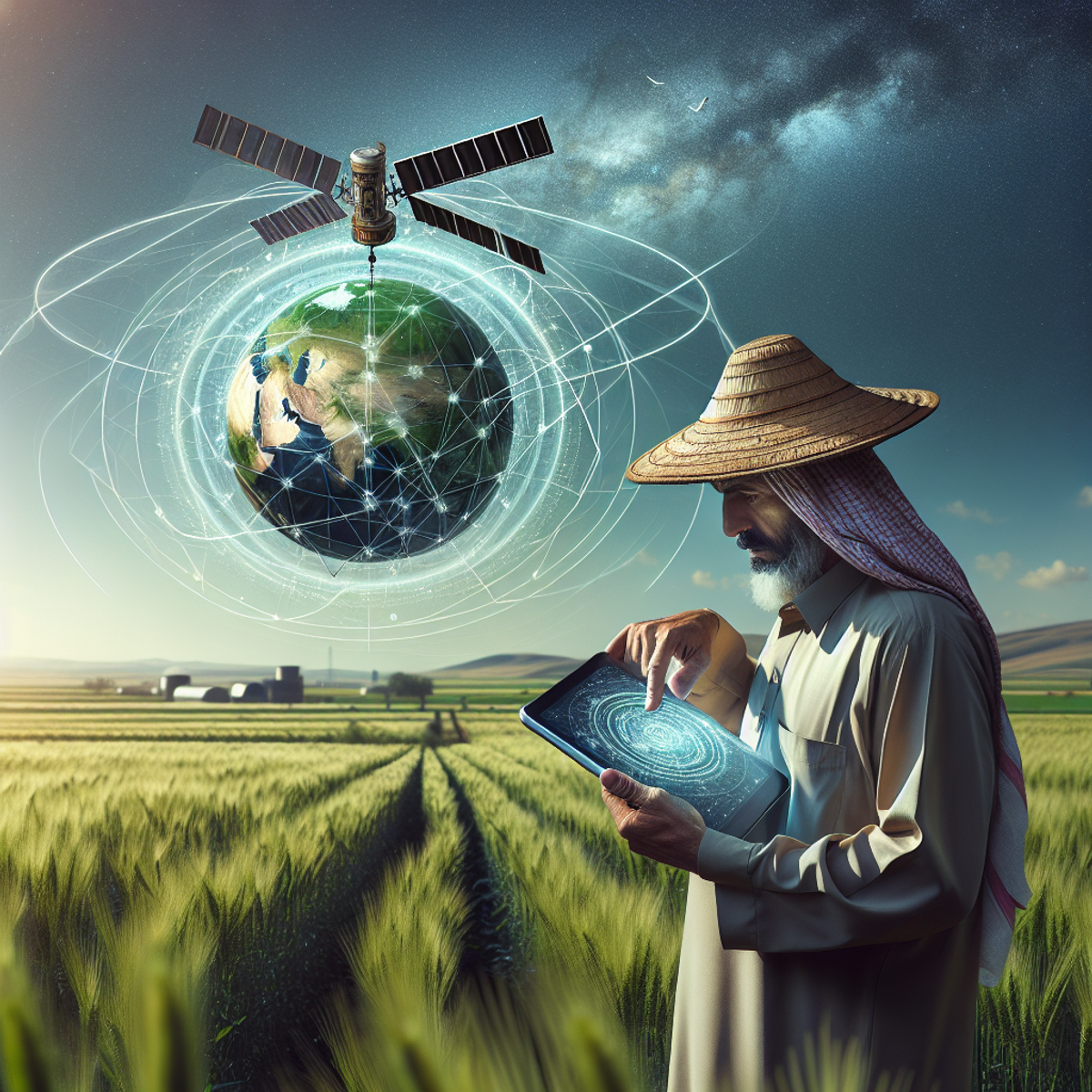
Global Positioning System (GPS) technology plays a vital role in georeferencing data collected from different field locations. By precisely pinpointing the location of each data point, GPS facilitates spatial analysis and mapping in crop monitoring activities.
With GPS-enabled devices mounted on farming machinery such as tractors or drones, farmers can track and record their movements across fields. This information is crucial for creating accurate maps that highlight variations in soil characteristics or crop performance within a specific area.
By overlaying data collected from multiple sources onto these maps, such as yield monitors or soil nutrient levels measured by sensors, farmers gain valuable insights into spatial patterns and variability. This enables targeted interventions like variable-rate application of fertilizers or pesticides based on specific field conditions.
Remote Sensing: Acquiring Large-Scale Data for Crop Monitoring
Remote sensing techniques, including satellite imagery and aerial drones, are revolutionizing the way farmers acquire data for crop monitoring. These technologies provide a high-resolution view of large-scale agricultural landscapes, enabling farmers to monitor crop health, detect stress patterns, and delineate management zones within fields.
- Satellite imagery offers a comprehensive perspective on crops by capturing data from vast areas.
- Aerial drones equipped with cameras or multispectral sensors provide even more detailed information about crops.
Data Analysis Tools: Deriving Insights from Sensor, GPS, and Remote Sensing Data
The vast amount of data gathered through sensors, GPS devices, and remote sensing platforms requires advanced data analysis tools to derive meaningful insights. Machine learning algorithms and predictive models are increasingly being utilized in precision agriculture to process and analyze this data effectively.
Machine learning algorithms can identify patterns in sensor data to predict plant stress or disease outbreaks. By training models using historical data on disease symptoms or environmental factors, these algorithms can accurately classify new instances and alert farmers when intervention is necessary.
Predictive models based on machine learning algorithms and historical yield data enable farmers to forecast crop yields under different environmental conditions. By combining information from sensors with weather forecasts and other variables, these models provide valuable insights for proactive management strategies.
In addition to machine learning algorithms, other data analysis tools help farmers visualize and interpret the collected data. [Geographic Information System (GIS)
Python in Precision Agriculture: Leveraging Data Science Capabilities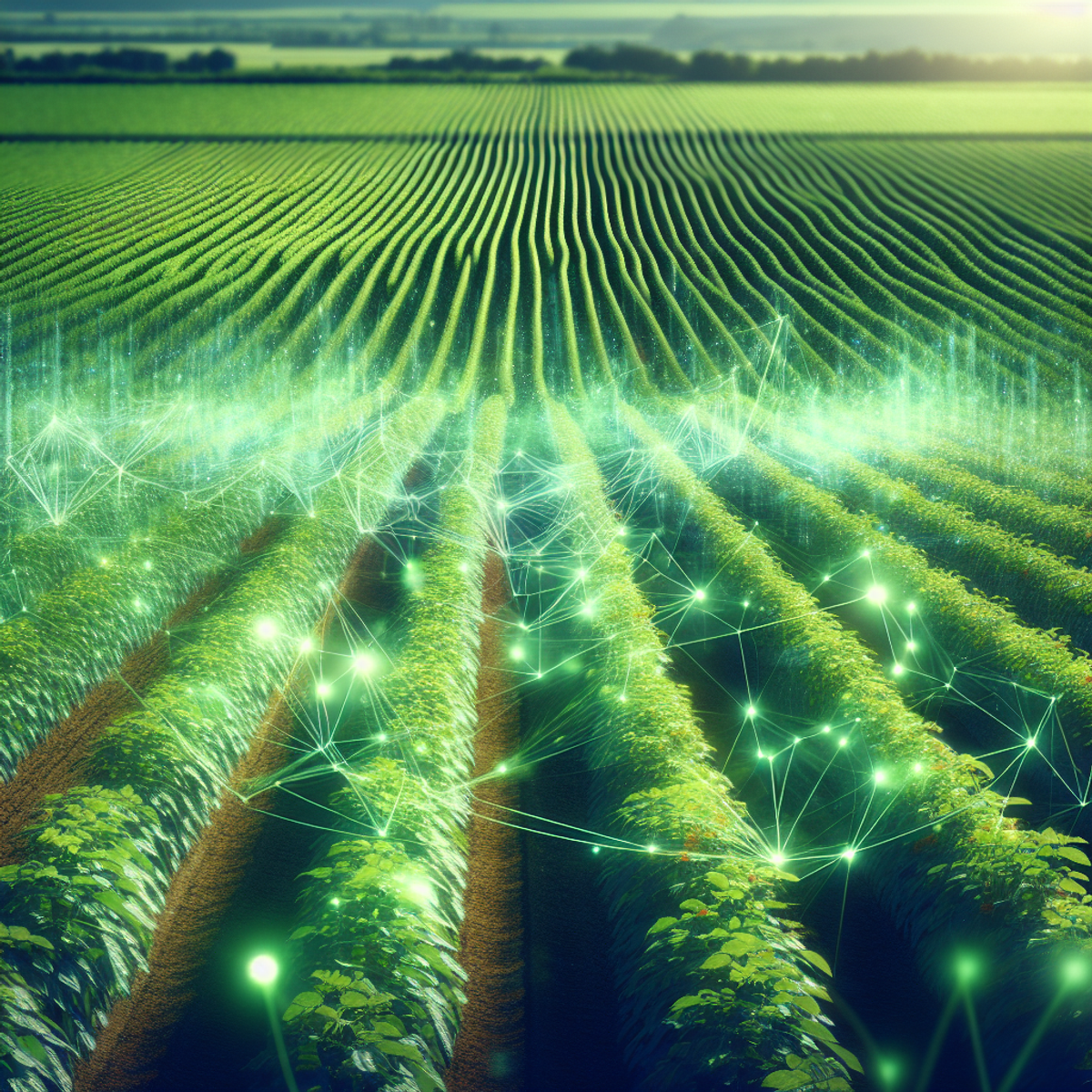
Python programming language plays a crucial role in precision agriculture by supporting data analysis, automation, and decision-making processes. With its extensive libraries and frameworks, Python enables farmers to process, analyze, and visualize agricultural data effectively.
Utilizing Python for Data Processing and Analysis
In precision farming systems, Python code is used to handle large volumes of data collected from various sources such as sensors, GPS devices, and remote sensing platforms. Python's data processing capabilities allow farmers to clean and organize the collected data before analysis. By using libraries like Pandas and NumPy, farmers can manipulate and transform data efficiently.
Python also offers a wide range of statistical analysis tools that enable farmers to derive valuable insights from agricultural data. Libraries such as SciPy and Statsmodels provide functions for conducting hypothesis testing, regression analysis, time series analysis, and more. These analyses help farmers understand trends, patterns, and correlations in their data.
AI Techniques for Automated Decision-Making
Artificial Intelligence (AI) techniques powered by Python play a significant role in automating decision-making processes in crop monitoring tasks. Machine Learning algorithms enable computers to learn from past data and make predictions or decisions without explicit programming. Farmers can leverage these AI techniques to optimize their crop management strategies.
One area where AI techniques have shown great promise is in computer vision applications for crop monitoring. By using computer vision algorithms implemented in Python, farmers can automatically recognize diseases or pests in plants based on images captured by drones or sensors. For example, the OpenCV library provides a wide range of image processing functions that can be used for disease recognition or weed detection.
Real-World Examples of Computer Vision Applications
Python has been effectively employed in real-world scenarios to improve crop yields through precision farming using computer vision techniques. For instance:
- Disease Recognition: Farmers can use pre-trained machine learning models implemented through Python frameworks like TensorFlow or Keras to identify and classify plant diseases. By feeding images of diseased plants into these models, farmers can quickly detect signs of diseases such as blight, powdery mildew, or rust. This allows them to take immediate action to prevent further spread and minimize crop losses.
- Weed Detection: Python-based computer vision algorithms can also be used to identify and differentiate weeds from crops. By analyzing images captured by drones or sensors, farmers can develop automated systems that target and remove weeds precisely, reducing the need for herbicides and minimizing crop damage.
Predictive Models for Yield Prediction
Python's machine learning libraries enable farmers to build predictive models that forecast crop yields based on historical data and environmental factors. By training these models using datasets that include information such as weather conditions, soil properties, and management practices, farmers can gain insights into the expected yield for a given season.
With this information, farmers can make proactive decisions regarding irrigation schedules, fertilizer application rates, or pest control strategies. By optimizing these factors based on yield predictions, they can maximize productivity while minimizing resource waste.
In summary, Python's versatility and extensive libraries make it an ideal programming language for precision agriculture. With its data processing capabilities, AI techniques for automated decision-making, computer vision applications, and predictive modeling capabilities, Python empowers farmers to make data-driven decisions and optimize their crop monitoring practices for improved yields and sustainability.
Key Applications of Python in Crop Monitoring for Precision Agriculture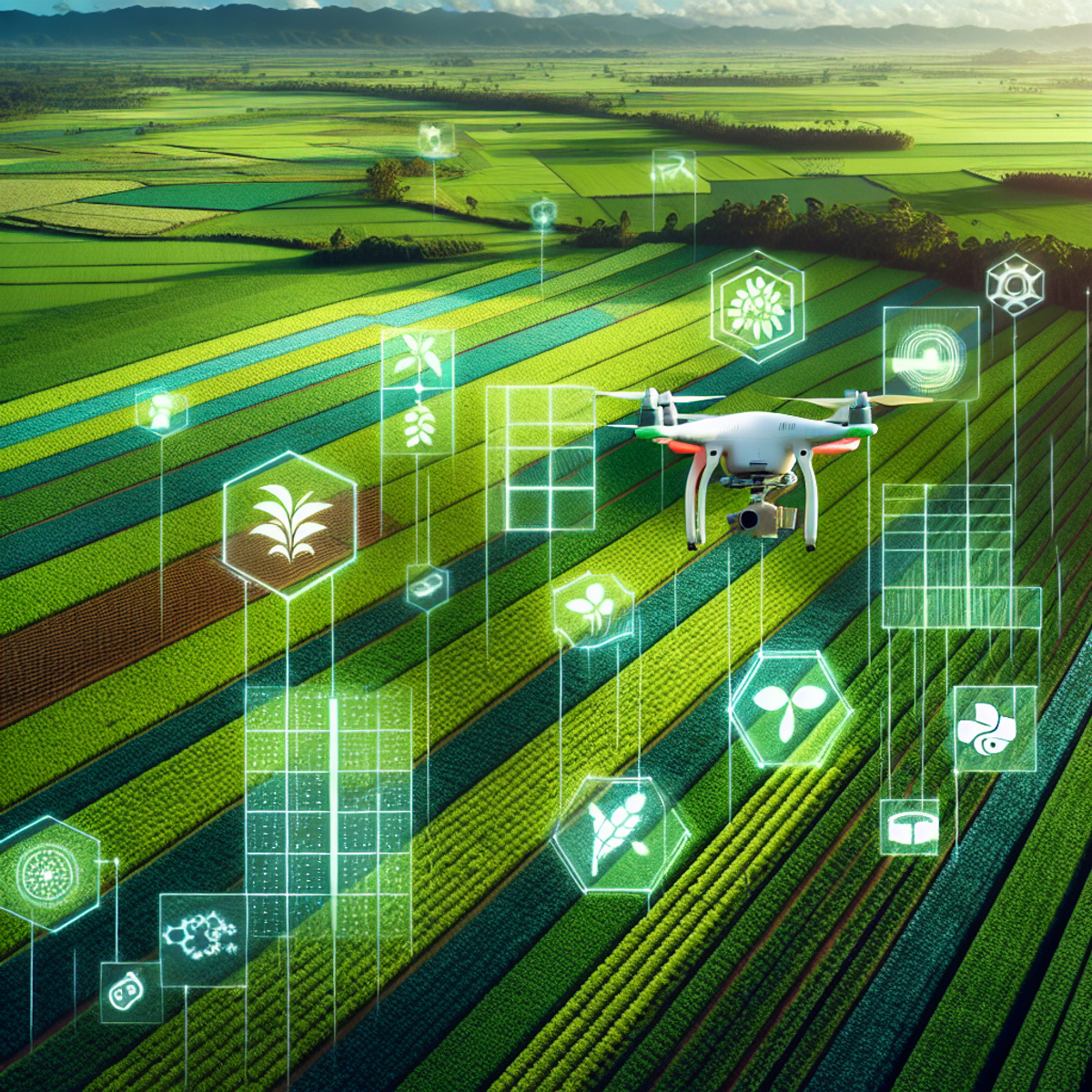
Python, with its versatility and extensive library ecosystem, offers numerous applications in crop monitoring for precision agriculture. Let's explore some specific areas where Python finds valuable use:
1. Image Processing for Privacy Protection
In the context of aerial images captured by drones for field surveillance purposes, privacy protection becomes a significant concern. Python provides an effective solution through its image processing capabilities. By utilizing Python code, it is possible to add blur effects or anonymize sensitive information within these images. This ensures that privacy concerns are addressed while still allowing for the collection of valuable data.
2. Disease Detection using Machine Learning
Machine learning (ML) techniques have proved invaluable in early identification and classification of plant diseases from image or sensor data inputs. Python, with its extensive ML libraries such as scikit-learn and TensorFlow, enables the implementation of pre-trained ML models for disease detection. These models can accurately analyze patterns and identify potential diseases affecting crops. By leveraging Python frameworks, farmers can take proactive measures to mitigate the impact of diseases on their crops, leading to improved yields and overall crop health.
3. Yield Prediction based on Environmental Data
Python plays a crucial role in developing regression models that forecast crop productivity levels based on historical records and real-time environmental parameters such as temperature, humidity, and soil moisture. By analyzing this data using Python libraries like NumPy and Pandas, farmers can make informed decisions regarding irrigation, fertilization, and other management practices to optimize crop yields. This level of precision helps reduce resource waste and improve overall resource management in agriculture.
Python's flexibility allows for seamless integration with various data sources such as weather stations, soil sensors, and satellite imagery. The language’s ability to handle large datasets efficiently makes it ideal for processing the vast amount of information necessary for accurate yield predictions.
By applying Python to precision agriculture practices, farmers gain valuable insights into their crop's health and productivity, enabling them to make informed decisions for optimal resource allocation. This not only maximizes economic sustainability but also minimizes resource waste.
The Advantages and Future Potential of Integrating Python in Precision Agriculture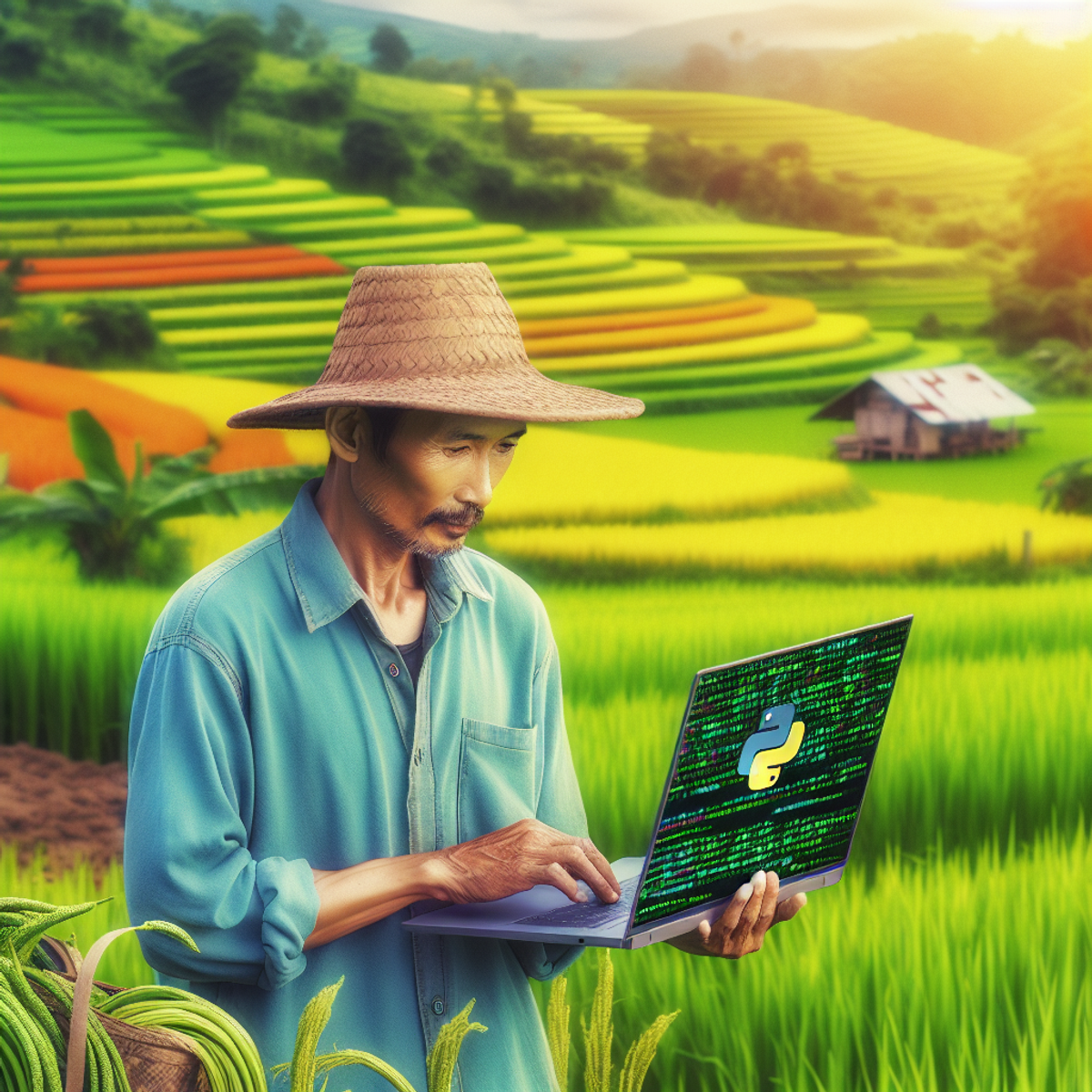
Increased Productivity through Data Processing and Analysis
- The potential for significant productivity gains in precision agriculture lies in Python's data processing speed and analytical capabilities.
- By leveraging Python, farmers can swiftly analyze large volumes of agricultural data to make informed decisions and optimize their farming practices.
Real-time Resource Optimization with Advanced Technologies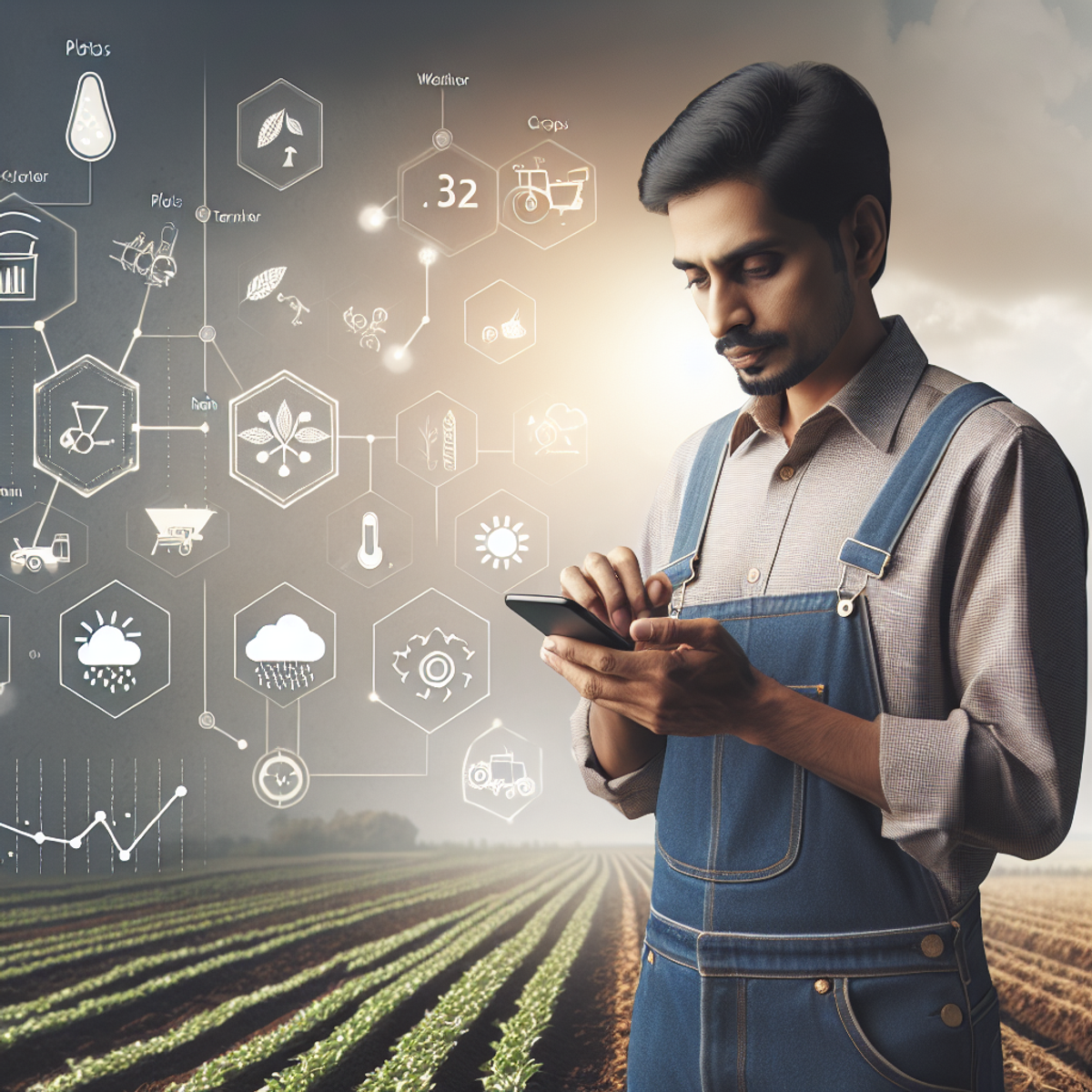
- The integration of Python with advanced sensing technologies and automated actuators enables real-time optimization of resource inputs.
- Through Python-based automation, farmers can precisely regulate water, fertilizers, and pesticides based on real-time data, leading to improved resource management and reduced waste.
Emerging Trends and Future Prospects for Python Applications
- Python's role in drone-based agriculture is gaining traction, allowing for efficient crop monitoring and analysis over large areas.
- The use of Python in farm robotics is advancing, enabling the development of autonomous farming systems for streamlined operations.
- Blockchain-enabled traceability systems powered by Python offer the potential to enhance transparency and accountability in the agricultural supply chain.
Embracing Python as a Valuable Skillset for the Future
Readers are encouraged to explore Python as a valuable skillset for the future of agriculture, given its significance in precision agriculture and crop monitoring. Resources for learning Python and initiating agricultural data science projects are highlighted, empowering readers to delve into this field.
Moreover, an insightful study on "The Role of Python in Enhancing Precision Agriculture" sheds light on the various aspects and benefits of integrating Python in this domain. It provides a comprehensive analysis of how Python can revolutionize precision agriculture and highlights its potential for boosting productivity, optimizing resource utilization, and fostering emerging trends such as drone-based agriculture and blockchain-enabled traceability systems.
Precision Agriculture in India: Current Status and Opportunities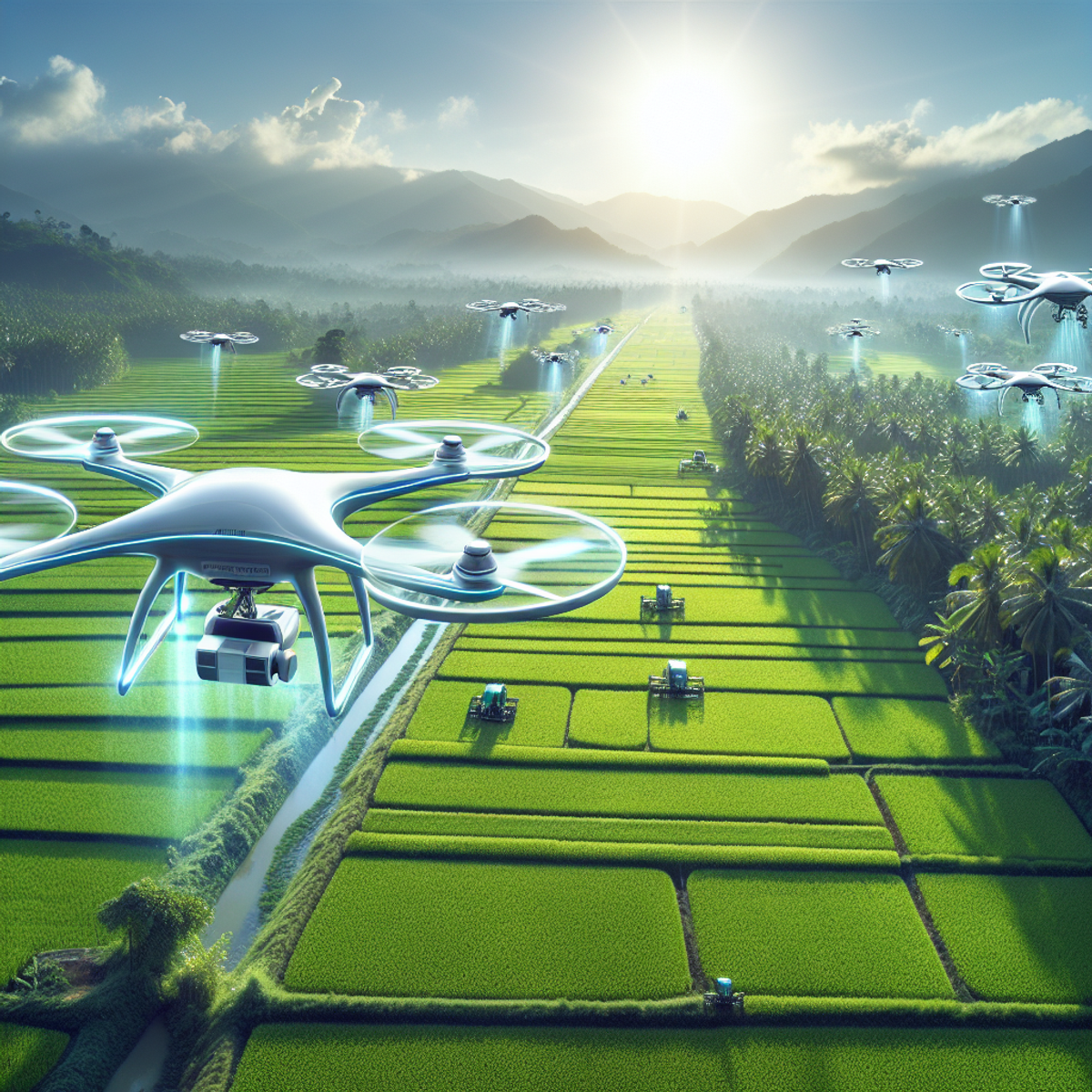
Precision farming is gaining momentum in India as farmers embrace advanced technologies and data-driven approaches to optimize crop production. With a growing population and increasing food demand, the adoption of precision agriculture techniques becomes crucial for ensuring food security and sustainable farming practices in the country.
Adoption of Precision Agriculture Techniques in India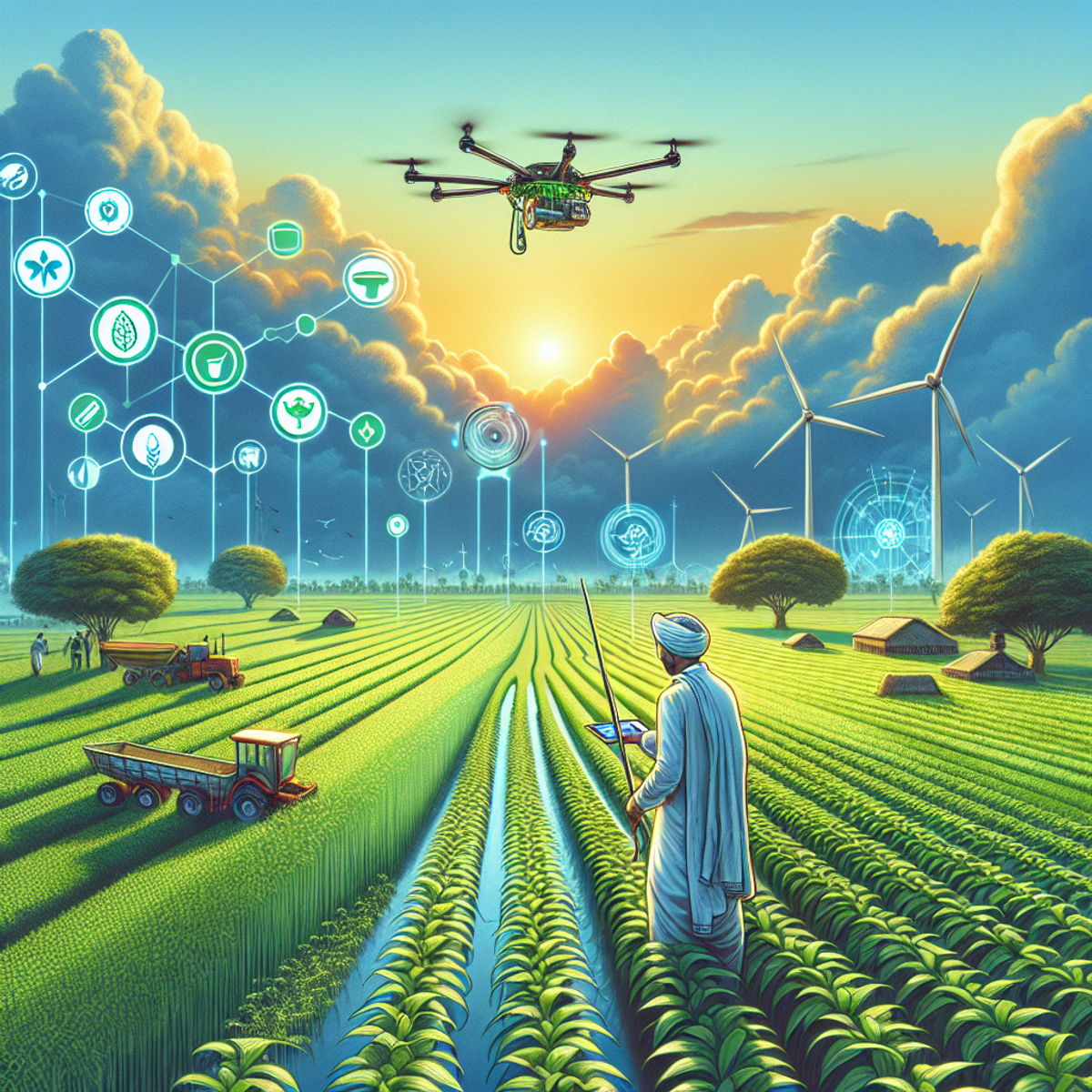
The adoption of precision agriculture techniques in India is influenced by various factors, including farm size, socio-economic conditions, and policy support. While large-scale commercial farms have been early adopters of precision farming technologies, there is also a rising interest among smallholder farmers to leverage these advancements.
Government initiatives such as the Pradhan Mantri Krishi Sinchayee Yojana (PMKSY) and the National e-Governance Plan in Agriculture (NeGP-A) have played a significant role in promoting the use of technology in agriculture across the country. These programs aim to enhance water use efficiency, promote soil health management, and provide better access to market information for farmers.
Ensuring Food Security through Precision Agriculture
India's growing population poses a challenge to ensure food security. Precision agriculture plays a vital role in bridging the yield gap and mitigating production risks by optimizing resource inputs and improving crop management practices.
By leveraging technology-driven approaches, farmers can monitor crop health, detect diseases or pests early on, and make informed decisions regarding irrigation, fertilization, and pest control. This proactive approach helps maximize yields while minimizing input wastage and environmental impact.
Democratizing Access to Precision Farming Benefits
In recent years, affordable technological advancements have emerged that have the potential to democratize access to precision farming benefits, particularly in rural areas of India. These advancements include low-cost sensor networks, mobile applications, and community-based knowledge sharing platforms.
Low-cost sensor networks enable farmers to gather real-time data on soil moisture levels, temperature, humidity, and other critical parameters. This information helps them make data-driven decisions regarding irrigation scheduling and nutrient management. Mobile applications provide farmers with instant access to market prices, weather forecasts, and crop management recommendations, empowering them to make informed choices.
Community-based knowledge sharing platforms facilitate the exchange of best practices, experiences, and local insights among farmers. This peer-to-peer learning approach promotes the adoption of precision farming techniques and helps overcome barriers related to limited technical expertise or access to resources.
Opportunities for Precision Agriculture in India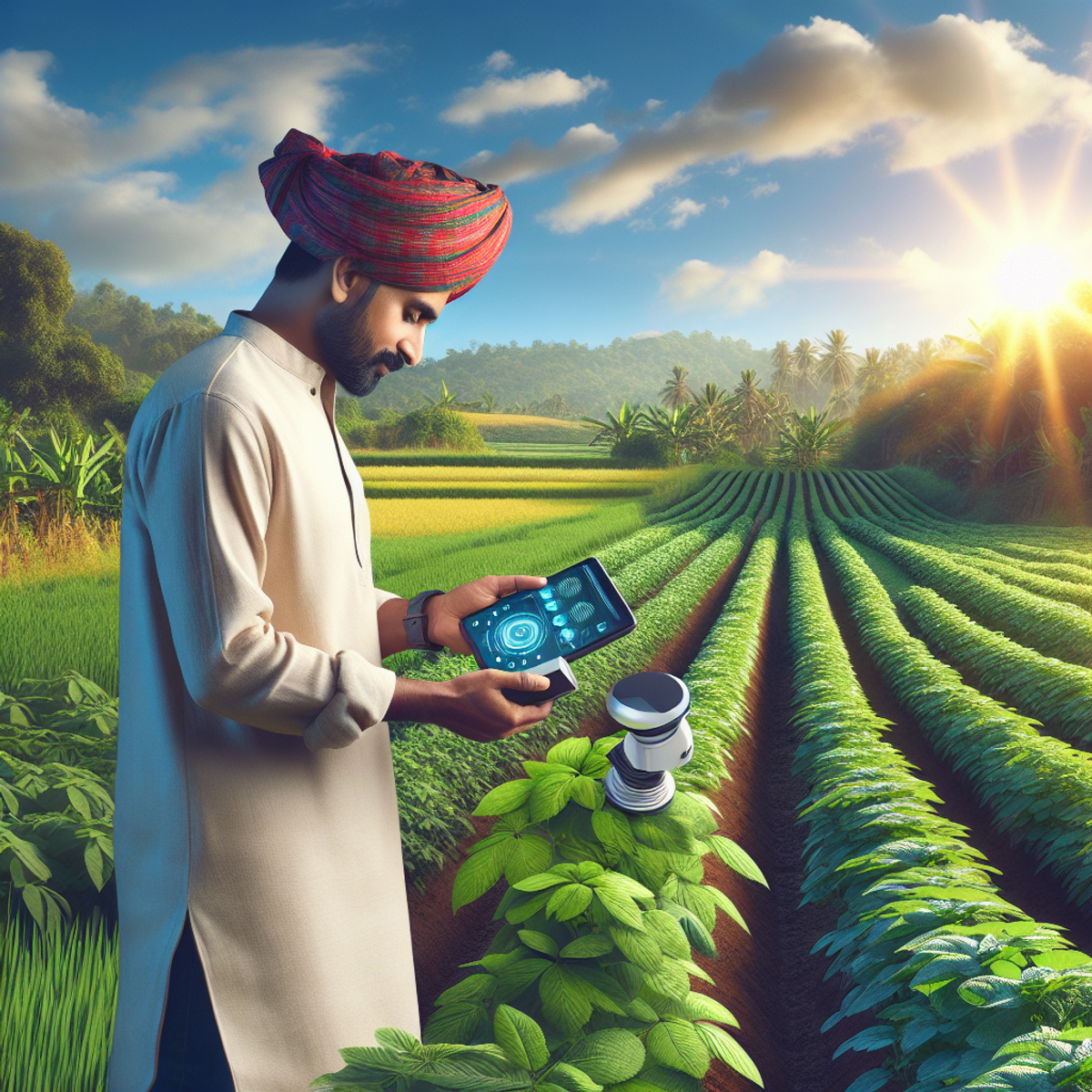
The potential for precision agriculture in India is vast, considering the country's diverse agro-climatic conditions and crop varieties. Some specific opportunities for precision agriculture include:
- Crop-specific Management Practices: Precision agriculture techniques can be tailored to suit different crops and regions in India. By understanding the specific needs of each crop and fine-tuning management practices accordingly, farmers can optimize productivity while minimizing resource wastage.
- Water Management: Water scarcity is a significant challenge in many parts of India. Precision agriculture techniques, such as soil moisture sensors and automated irrigation systems, can help optimize water usage by delivering water precisely when and where it is needed.
- Crop Health Monitoring: Timely detection and control of diseases and pests are critical for maintaining crop health. Remote sensing technologies, coupled with advanced data analysis techniques, can enable early disease detection, reducing the reliance on chemical pesticides.
- Market Linkages: Precision agriculture can also facilitate better market linkages for farmers by providing real-time market information and helping them produce crops that meet market demands in terms of quality and quantity.
By embracing precision agriculture practices and leveraging affordable technologies like low-cost sensor networks and mobile applications, Indian farmers can enhance productivity, improve resource efficiency, and contribute to sustainable agricultural development.
Note: The information provided is based on available content and may vary based on specific regional contexts.
Conclusion
Embracing Python for Agricultural Innovation
Python is a powerful tool in the realm of precision agriculture, offering a wide array of applications that can revolutionize crop monitoring and farming practices. By leveraging the capabilities of Python, farmers and agricultural professionals can tap into advanced data science techniques to make informed decisions and drive sustainable outcomes in their operations.
The Future of Agriculture: Technology, Data, and Policy
The convergence of advanced technologies, data science, and inclusive policy frameworks holds tremendous promise for the future of farming. With Python at the forefront of these developments, there are ample opportunities to enhance efficiency, optimize resource management, and ensure the resiliency of agricultural systems.
In conclusion, the potential of Python in precision agriculture is vast. By embracing this powerful programming language, stakeholders across the agricultural landscape can harness innovation to foster sustainability, productivity, and resilience in the ever-evolving domain of precision agriculture.
FAQs (Frequently Asked Questions)
What is precision agriculture and how does it revolutionize the farming industry?
Precision agriculture involves the use of advanced technologies and data-driven approaches to optimize crop production with enhanced efficiency and accuracy. It revolutionizes the farming industry by enabling farmers to make precise decisions based on real-time data, leading to higher yields, reduced environmental impact, improved resource management, and overall economic sustainability.
Why is continuous crop monitoring important in precision agriculture?
Continuous crop monitoring is crucial in precision agriculture as it allows farmers to assess plant health, detect pests or diseases, manage irrigation, and apply fertilizers precisely when needed. This proactive approach helps in ensuring the success and sustainability of precision agriculture practices.
What role does Python play in supporting data analysis, automation, and decision-making in agricultural processes?
Python is a powerful programming language that supports data analysis, automation, and decision-making in agricultural processes. It is utilized to process, analyze, and visualize agricultural data in precision farming systems. Python also plays a significant role in enabling automated decision-making processes for crop monitoring tasks through AI techniques and machine learning models.
How do sensors contribute to precise decision-making in farming operations?
Sensors capture various types of data related to soil conditions, weather parameters, plant growth, etc., enabling precise decision-making in farming operations. This data is essential for assessing the needs of crops and making informed decisions regarding irrigation, fertilization, and pest management.
In what specific areas within crop monitoring does Python find valuable applications?
Python finds valuable applications in areas such as image processing for privacy protection, disease detection using machine learning, yield prediction based on environmental data, and more. It is leveraged to develop regression models that forecast crop productivity levels based on historical records as well as real-time environmental parameters like temperature, humidity, and soil moisture.
What are the potential productivity gains achieved by harnessing the capabilities of Python in precision agriculture?
Farmers can achieve potential productivity gains by harnessing the data processing speed and analytical capabilities of Python in their precision agriculture endeavors. The integration of Python with advanced sensing technologies and automated actuators can enable real-time optimization of resource inputs such as water, fertilizers, and pesticides.


Comments
Post a Comment